| A
repository of Jedi knowledge and teaching, these legendary
artifacts are palm-sized glowing cubes of crystal that employ
primitive holographic technology along with the Force to provide
an interactive learning device. Known
originally as a holographic chronicle, this was a recording device
used by the ancient Jedi Knights to hold the multitude of
teachings and lore needed to maintain the Jedi Knights. |

|
|
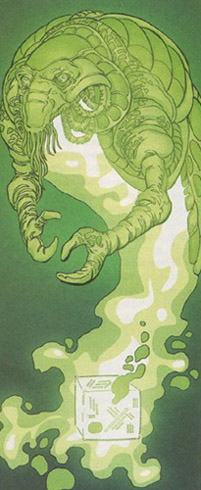
|
These
devices provide a visual and vocal way to view the enclosed
information. Each holocron has a gatekeeper assigned to dispense
the information. The gatekeeper contains the cognitive network
functions of a Jedi Master, and acts as a search, recovery, and
storage allocation program.
A Holocron can usually be activated only by a Jedi, who can then
seem to have a conversation with the long-dead Jedi, whose
teachings infuse the particular Holocron. |
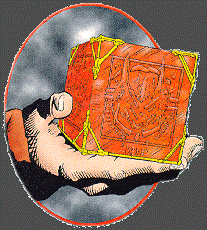
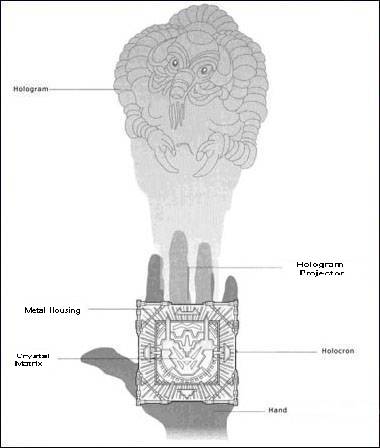
|
|
The devices are shaped like small,
translucent cubes, and can be activated by a person controlling
The Force. Mysterious
designs are etched into the Jedi Holocrons, hinting at their true
age. The Holocron can sense the user's ability with the
Force, and can block out areas of knowledge that are beyond the
user's ability. Despite the name, these holocrons were not limited
to the Jedi Knights. Several holocrons containing Sith lore have
been discovered as well. |
|
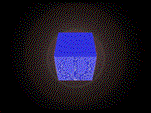
|
|
Deep
within the Jedi temple on Coruscant, thousands of years of
collected Republic history, studiously maintained by the Jedi
since the earliest days of the order, resides in the Archives
Library. Among the collected histories, records, teachings,
and solemn busts depicting Jedi long dead, the Great Holocron
awaits all those students of the Force willing to learn from
its vast stores of collected knowledge. |
Unlike
some Force artifacts, the twelve-sided Great Holocron was
designed specifically for ease of use, especially by young
Jedi trainees. Some, including Archives Director Madame
Jocasta Nu, have speculated that even Yoda may not yet have
learned all its mysteries. Regardless, it is said to be the
largest and most powerful holocron in the Archives Library.
|
|
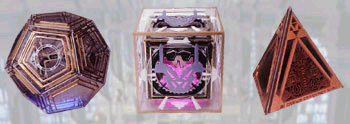
|
|
Great
Holocron |
Jedi
Holocron |
Sith
Holocron |
|
|
Holocron
Construction |
| As a prop a
Holocron is basically a decorated cube.
I began the construction of my
Holocron as a cardboard box. I drew various
designs on it to simulate the etchings to be made later. |
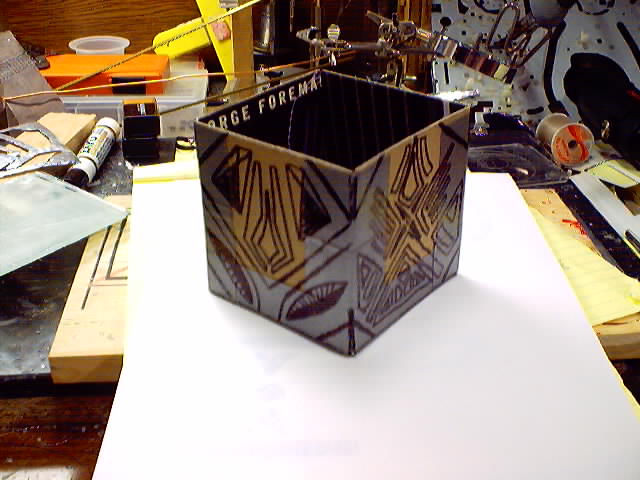
|
This box
served as a sizing chart for my Holocron, as well as a
prototype vision.
I decided to make this more than a
decorated box. All imagery and descriptions of Holocrons
shows a glowing crystal matrix along with the
decorations. Time to get creative... |
|
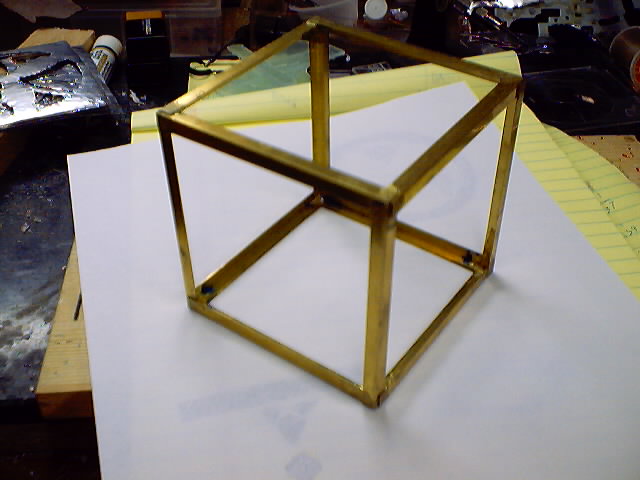
|
The next step
was to create the frame for my Holocron. I used copper
stripping that was bent into a 90 degree corner. The
pieces were glued together with epoxy. |
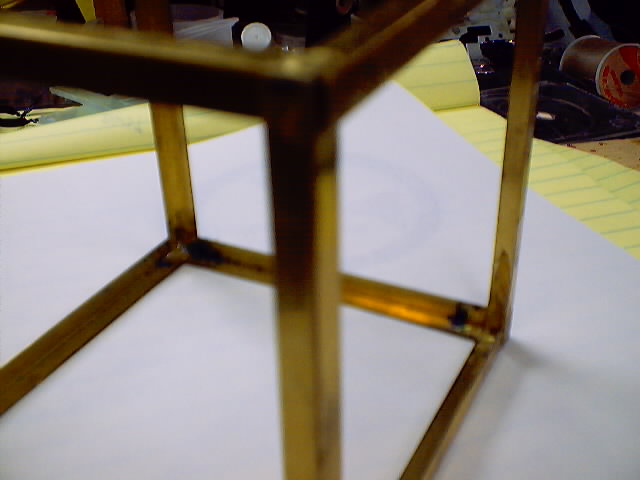
|
I knew that I would have to be able
to see inside the Holocron. But I wasn't sure what I
would see on the inside, other than some crystal structure
and a glow. I decided that the etching on the outside
of my Holocron would actually be single plates with holes
punched out of them. I got sheet metal and put
together four different designs.
|
|

Xaleth's
Force Symbol (Note the two bands on opposing sides of a single
field.) |
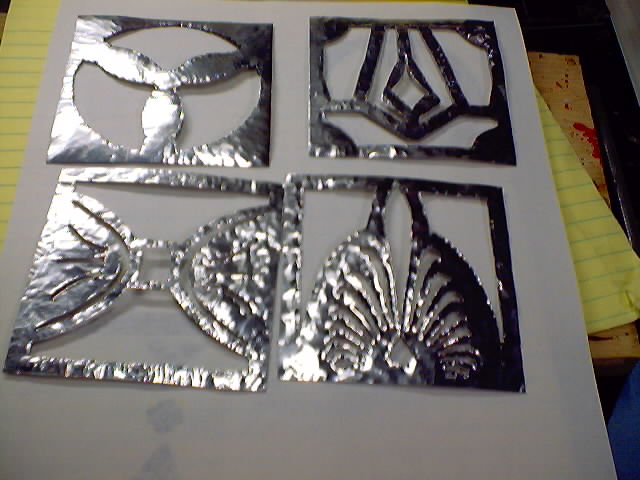
Each of the plates was
formed by sketching out a design on one side and scoring the
final lines. The lines (with a lot of pressure) pushed
through to the other side. The final cutting out was
made with a small jeweler's flat head screwdriver and a
hammer. The plates were then given a mottled look with a
hammer. |

Ancient
Symbol of the Jedi Order (as seen in the Tales of the Jedi
comic series) |
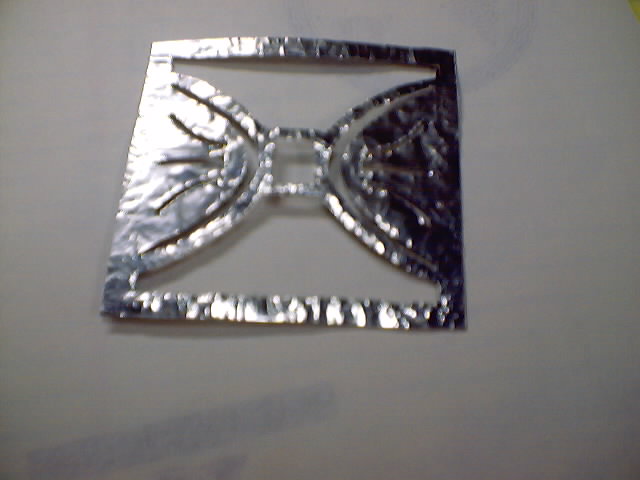
Stylized Celtic Tree of Life |
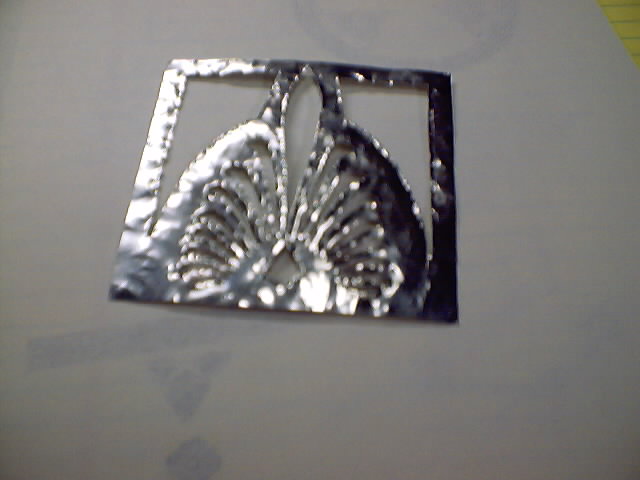
Flowering symbol on
the floor of the Jedi High Council chamber (SW:TPM) |
| Not to be
outdone by the side patterns I also had to create a pattern
for the top of the Holocron; the emitter. |

|
I
noted the design of the Holoemitter that Qui-Gon Jinn used in
The Phantom Menace as a reference. |
|
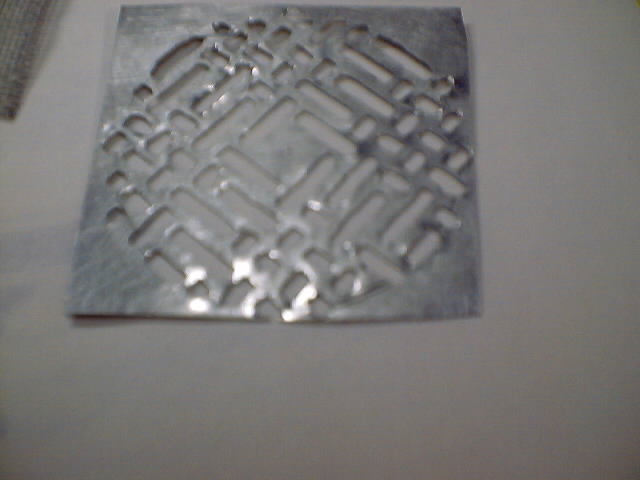
|
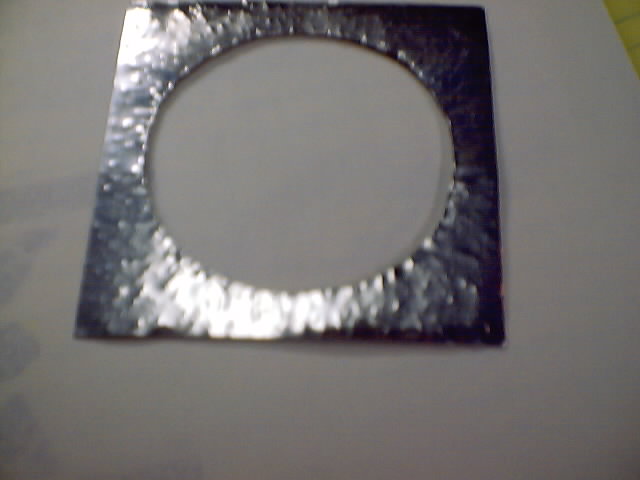 |
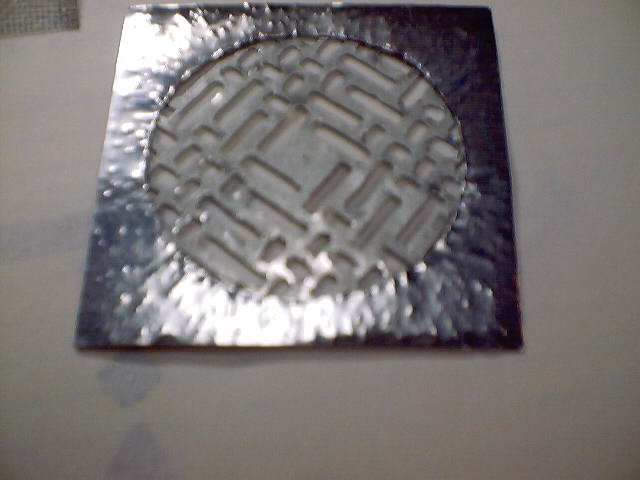 |
| After
some time (and a lot of research) I decided on a method of
lighting the Holocron.
Electroluminescent
Wire. The wire uses milliamps of current and produces no
heat. |
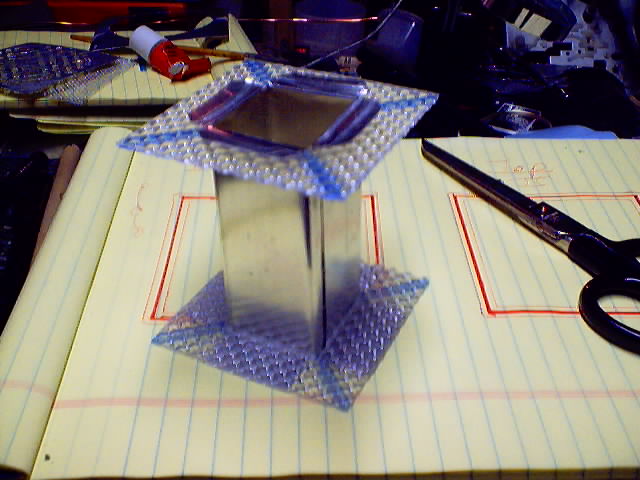
|
My
design would be focused around a single core. Within the
core would be the batteries and the DC/AC inverter.
I decided that
including the wire around the core I would also have the wire
on the inside edges of the cube.
|
|
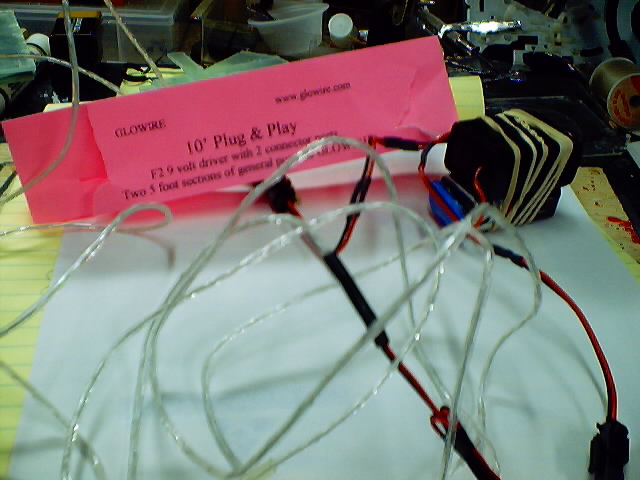
|
I
bought my wire from a company called GloWire. It was
quite inexpensive and comes in all varieties of sizes and
kits. I chose two 10 foot cords powered by a single
inverter and 9V battery. |
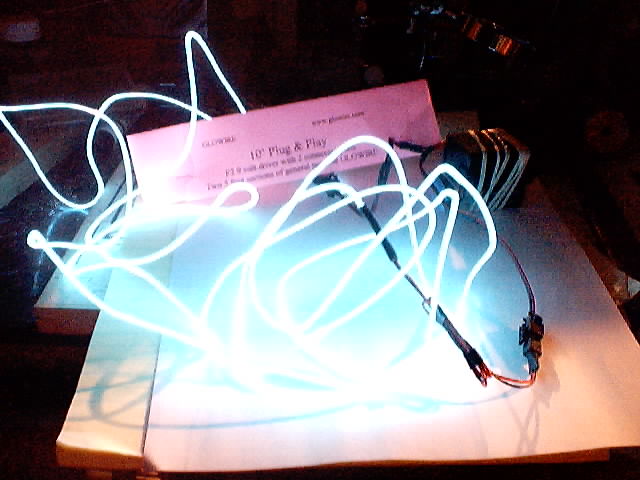
|
| Using
my trusty Dremel, I cut out the Plexiglas sheets which would
be the windows into my Holocron.
And into those
windows I etched in tiny Celtic knot work. The etching corresponded
to the openings in the sheet metal. |
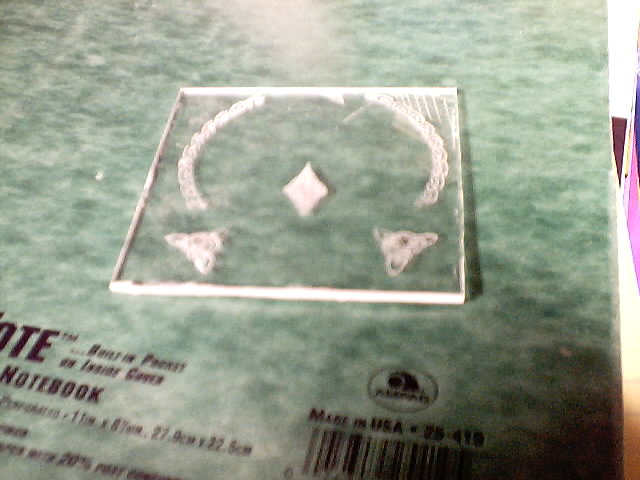
|
I glued the
pieces in place with epoxy.
Later I decided
(with input from my mom) that the etchings needed to stand out
more. So I painted the grooves with a copper enamel
paint. I cleaned off excess with paint thinner. |
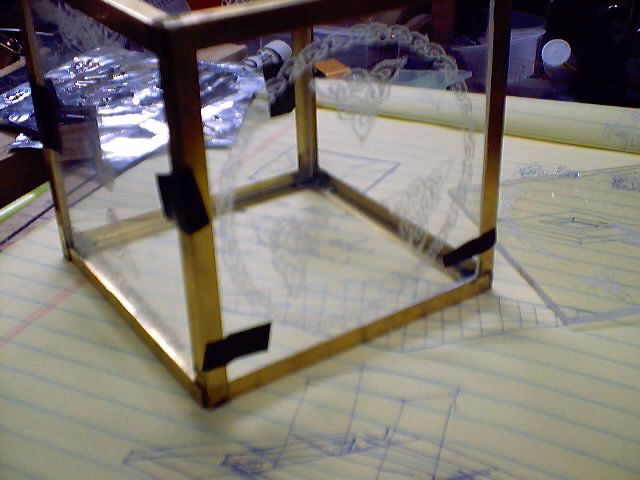 |
 |
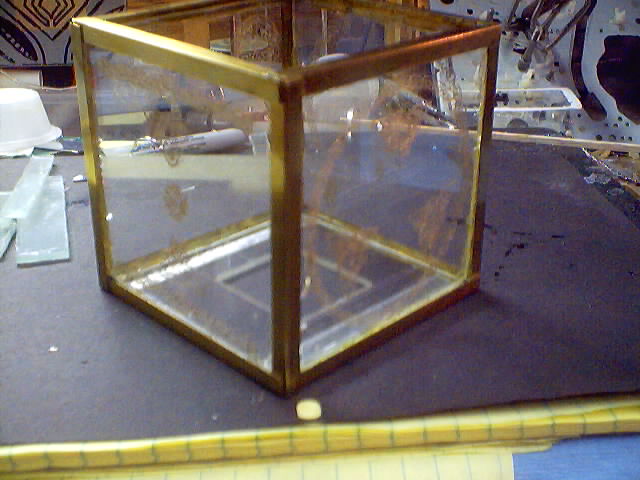 |
The
final phases of the construction are the most tedious.
I've decided to create the crystal matrix in the form of
electronic circuitry etched into tiny Plexiglas
pieces. Four corner units separate each side.
Wrapped around the core (secured in place by epoxy) is part
of one strand of the GloWire.
|
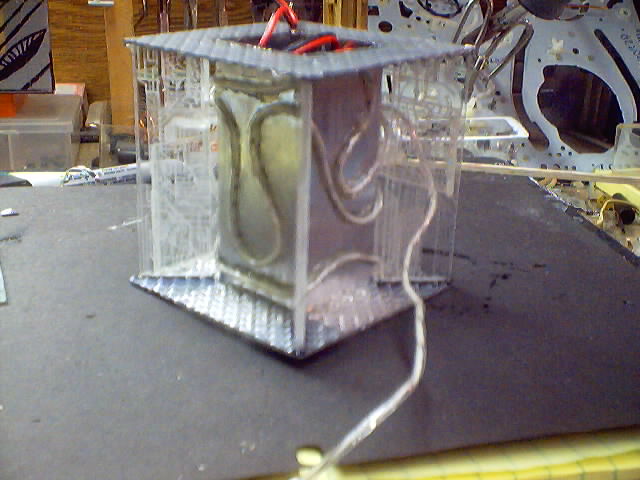 |
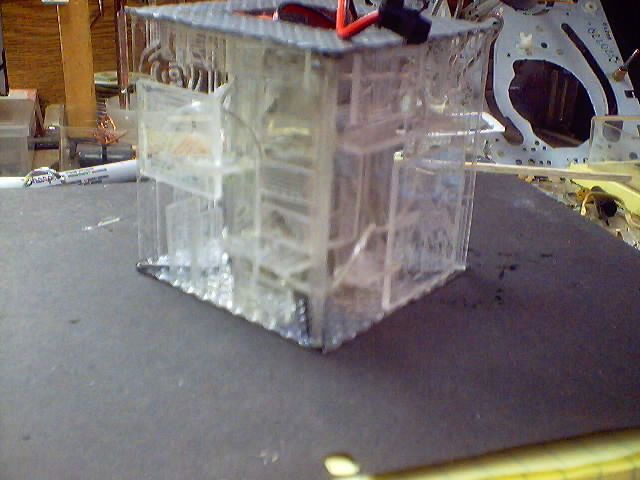 |
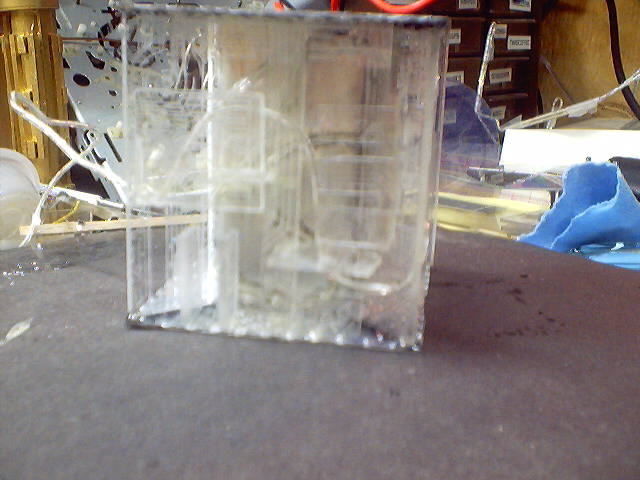 |
The circuitry is so
small it really doesn't show up on these pictures
well. When I wrapped the GloWire around the center I
realized I had only used about half of it. So as I
glued the circuitry in place I laced the remaining GloWire through
it.
|
 |
As
I continued to progress through each step I continued to check
the GloWire for operation and what effect it had.
I
even (temporarily) placed a side on to see the effect. |
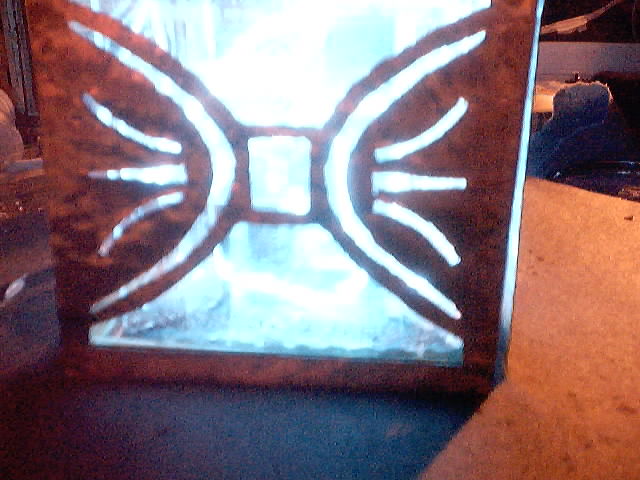 |
|
To
access the battery and inverter, with it's on/off switch, I
had to create some sort of opening.
I
cut out a hole for a bottom Plexiglas plate that matched the
opening of the center column |
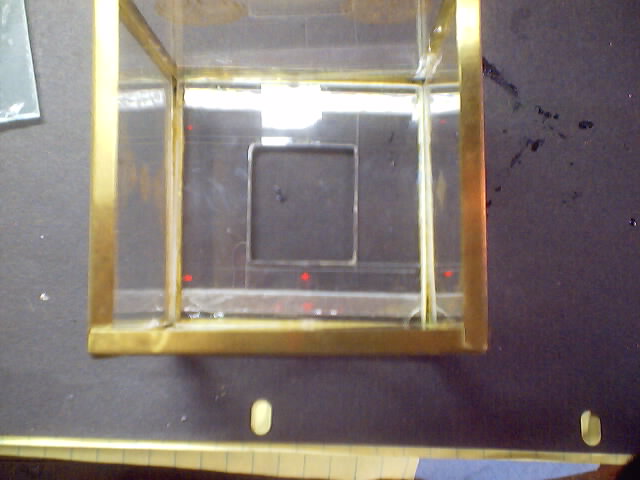 |
I
then created a sliding door mechanism so that I could open and
close access to the Holocron's inner workings. The
sliding door consists of two sheet metal panels that are held
in a channel on the bottom of the Holocron. |
|
|
|